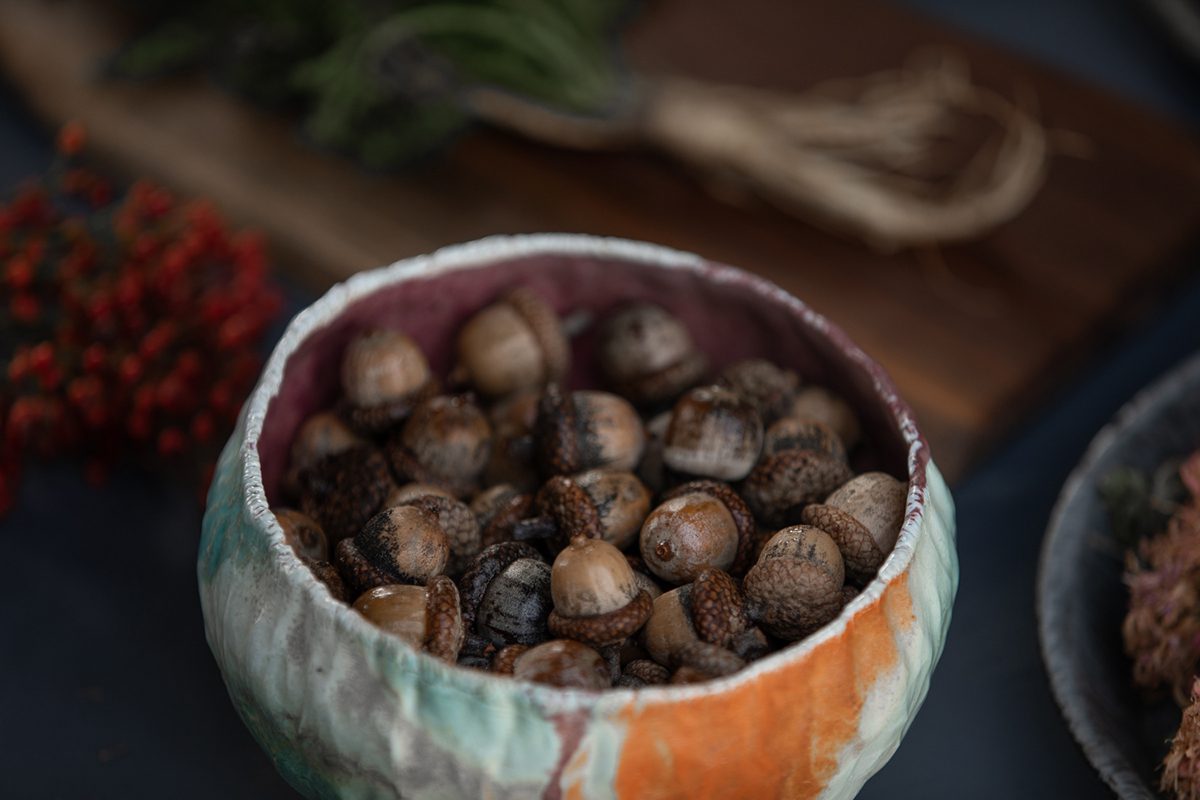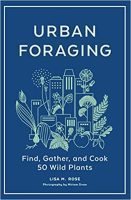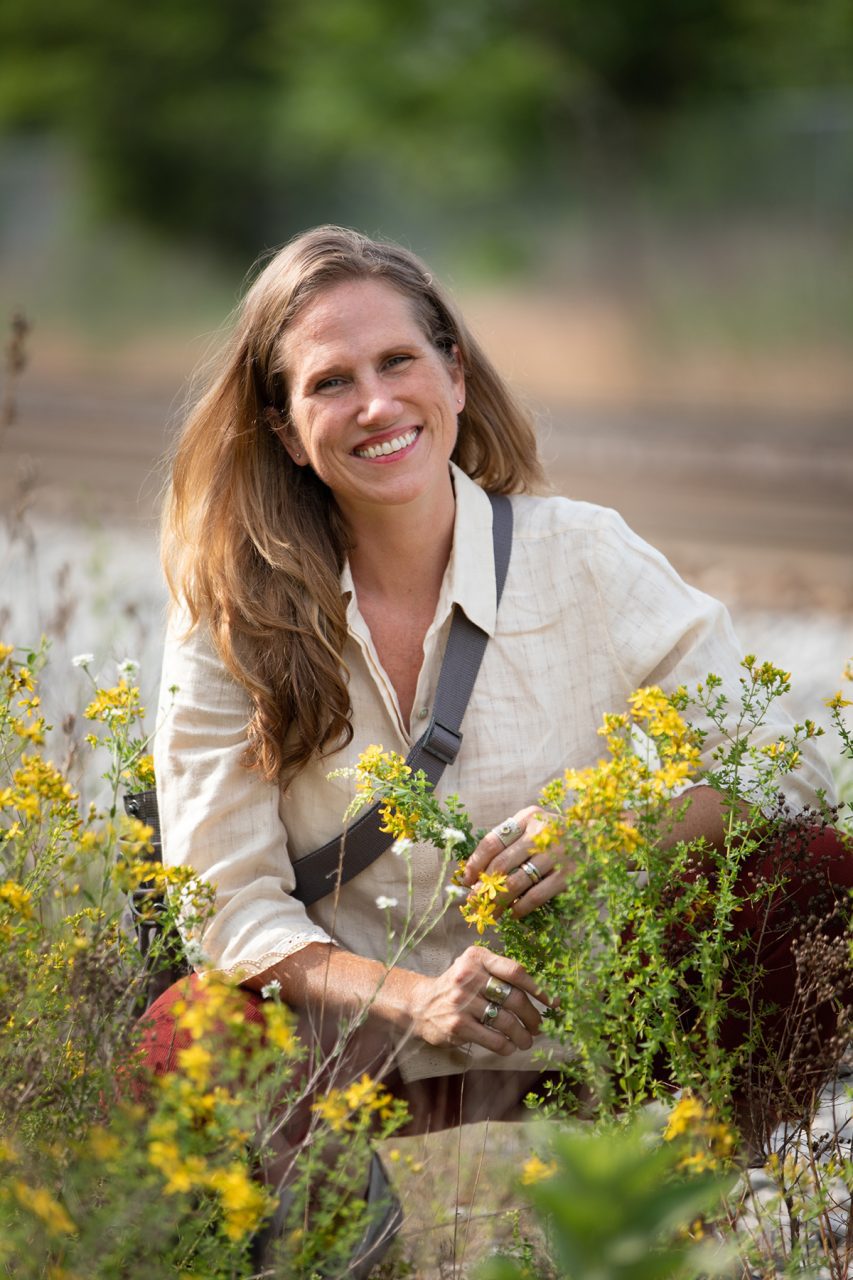
For Lisa Rose, author of the new book, “Urban Foraging,” her fascination with the often-overlooked plants that can be a part of a healthy diet began with family and has become a profession and a passion.
An anthropologist with an interest in ethnobotany and herbal medicine, Rose has written three books. Her first two, “Grand Rapids Food” and “Midwest Medicinal Plants,” were focused on her home state of Michigan. Her latest, though, “Urban Foraging,” released in October, takes a nationwide look.
Supporter Spotlight
“I’ve traveled a great deal between both coasts … so in considering this book, I really had to double click into generally what am I going to be able to find across most of my regions,” she said. “So in parts of North Carolina coastal regions, you might have 35 of those plants, whereas 15 might not be immediately at your fingertips. The criteria, first and foremost (was) geographic distribution.”

The foundation for her interest in botany, plants and how they can be a part of everyday life, began in Flint, Michigan, where she grew up. Her father was an engineer and mother an avid gardener, and both parents contributed to her fascination with plants.
“He was always asking questions, “she said, describing her father. “He was very engaged in the natural world. In fact, he taught me at a young age that the natural world is the best engineer, that the natural world has solutions to the problems of imbalance. There’s a natural rhythm, not always nice and frequently chaotic in the restoration of balance.”
It was her mother, though, who applied knowledge of the natural world to daily life.
“My mother was a gardener for a good chunk of my childhood, not because it was a hobby, but because it was a practical, economical way to feed her family,” Rose said. “We had a feral concord grape hedgerow when I was growing up and my mother would put up about 50 to 75 quart jars’ worth of juice. I mean that that really was a foundation of my childhood.”
Supporter Spotlight
Not every plant in the book grows in eastern North Carolina. Aspen, according to North Carolina Parks webpage “Vascular Plants of North Carolina,” only grows in the mountains of the state and even then, only rarely. Hyssop, described by the “Vascular Plants” page as “one of the tallest and most robust native herbs in the state,” has not been recorded in the Piedmont or coastal plain.
With 50 plants listed in her book, though, there are plenty to choose from. Some are well known as edible wild plants, particularly blackberries and grapes, although Rose features wild concord grapes of her native Michigan.

Some of her selections are surprising, although when reading about these plants, it becomes apparent why they were chosen.
The prickly pear is a case in point. Rose suggests numerous possible uses for the plant, ultimately settling on recommending a prickly pear simple syrup. When harvesting prickly pear, Rose makes clear the hazards involved, pointing out that the species has two types of sharp barbs awaiting the careless.
“Both the prickly pear pads and fruits are covered in large and tiny spines. While the large spies are somewhat avoidable, the glochids are pesky buggers that can get into the skin and feel like a fiberglass rash,” she writes. “The glochids will embed themselves into fabric, so do your gathering with leather gloves.”
She described for Coastal Review the lesson she learned the first time she harvested prickly pear.
I didn’t realize — It’s not the big thorns that are the worst problem. It’s the glochids. They’re horrible. I had harvested my first batch of prickly pear using a cloth bag and cloth gloves. That was the worst idea ever,” she said.
Her recommended recipe for prickly pear simple syrup is as a “delicious simple syrup for margaritas.”

A number of Rose’s recipes are for mixed drinks, which she noted is part of a long tradition.
“In past generations a lot of plants were preserved into a bitter as digestive aids and served as aperitifs. Monks were brewing them in the Middle Ages, 13th century France, Germany. So it’s really a long tradition, of maybe not for medicinal any longer but definitely today for a cocktail hour,” she said.
Many of the plants Rose writes about are often thought of as common weeds. Field garlic is a great example. Also known, according to the North Carolina State Cooperative Extension webpage as crow garlic, onion grass, stag’s garlic, wild garlic, and wild onion, the plant is common, especially along the edge of gardens. The plant has a distinct odor that is a cross between an onion and garlic and has the appearance of a spindly scallion.
Her recipe calls for a wild garlic flatbread, but she also notes the tops make an excellent garnish in place of scallion in a salad. She also writes that the bulb is exceedingly fibrous and quite difficult to use in a recipe.
Rose also takes readers into the forest. She noted that the needles, bark and resin of pine trees in general are edible. The needles in particular are emphasized for their culinary versatility.
“Chop the needles and use them as an herb to flavor salads, butters and vinegars for dressings,” she suggests in her book. She also notes that homebrewers can use pine needles to create ”a Belgian or wheat-styled ale without making the brew overly pine flavored.”
For Rose, “Urban Foraging” is a way to help readers understand the common plants in our lives that can be a part of our everyday diet — trees, flowers and many that are considered weeds. The book also reminds us of a largely forgotten history, a time when foraging for wild plants was a regular part of life. “In general, common knowledge we’ve forgotten about (wild plants),” she said. “We’re about two generations now from that having been a really common practice.”







